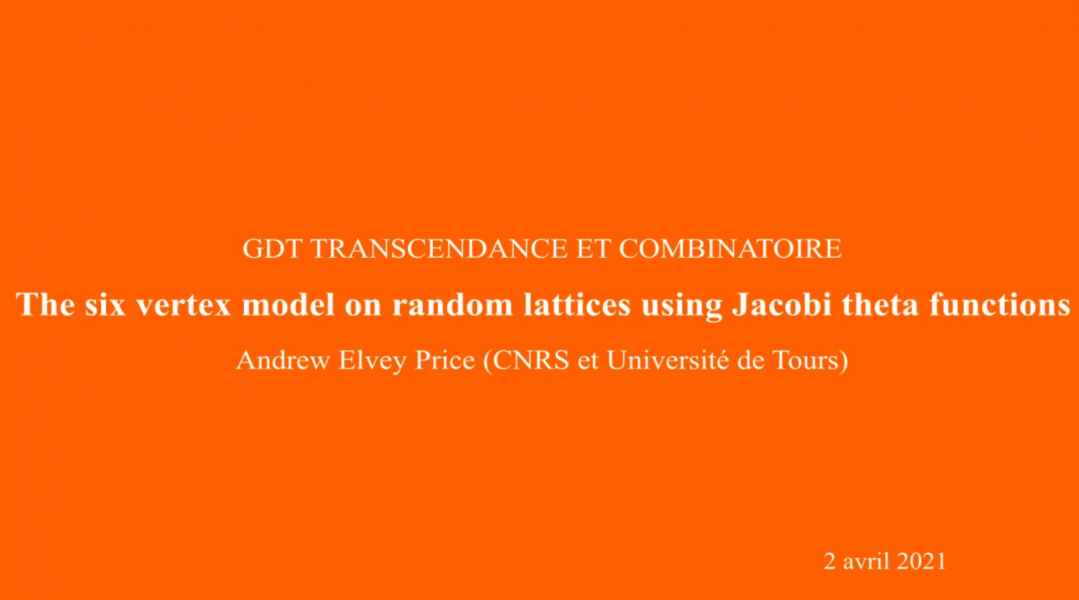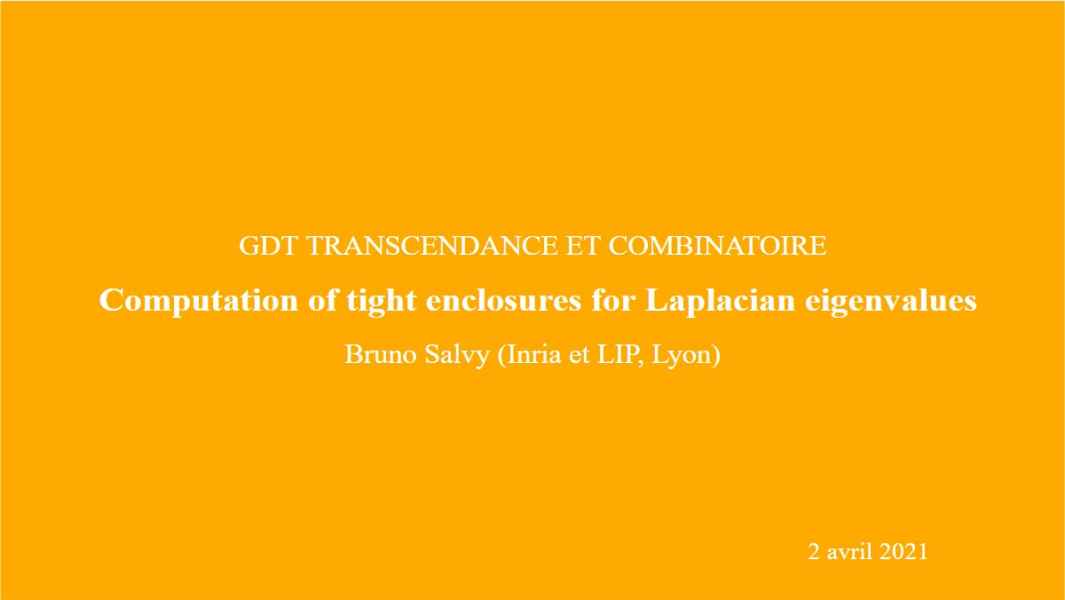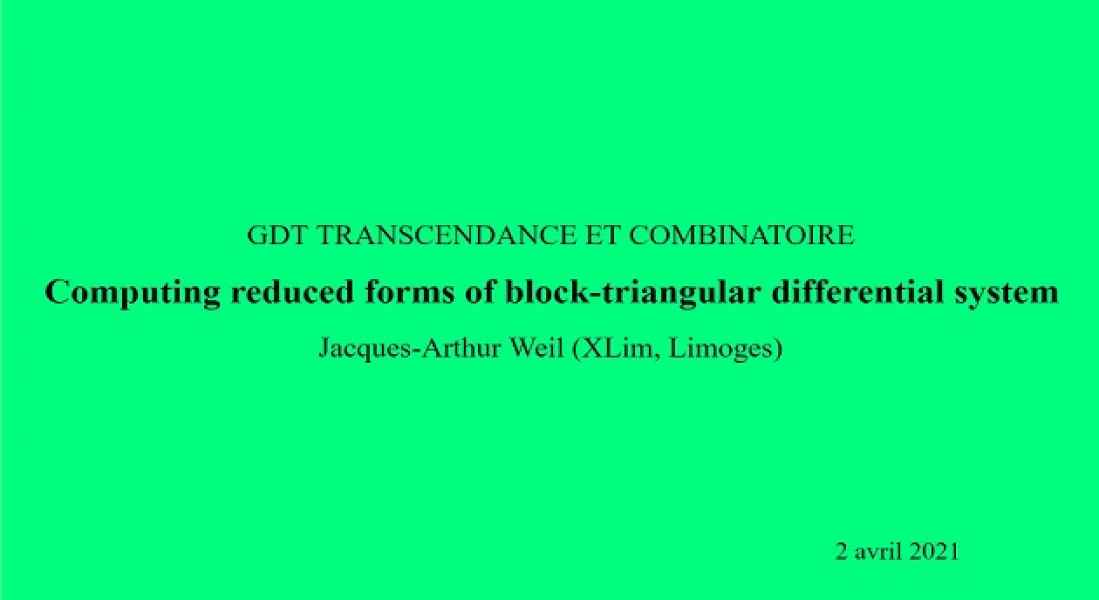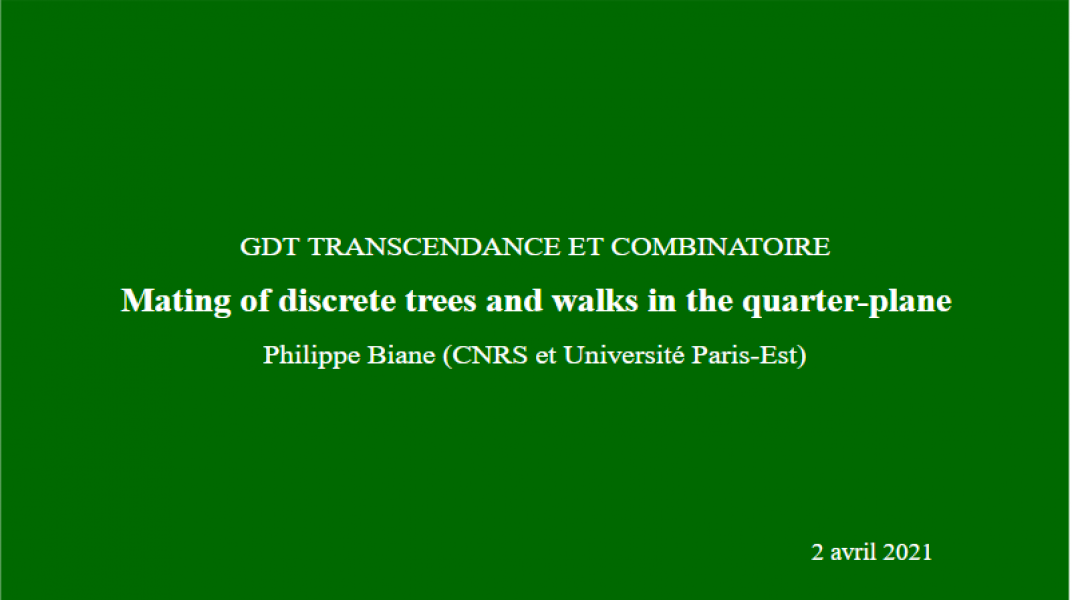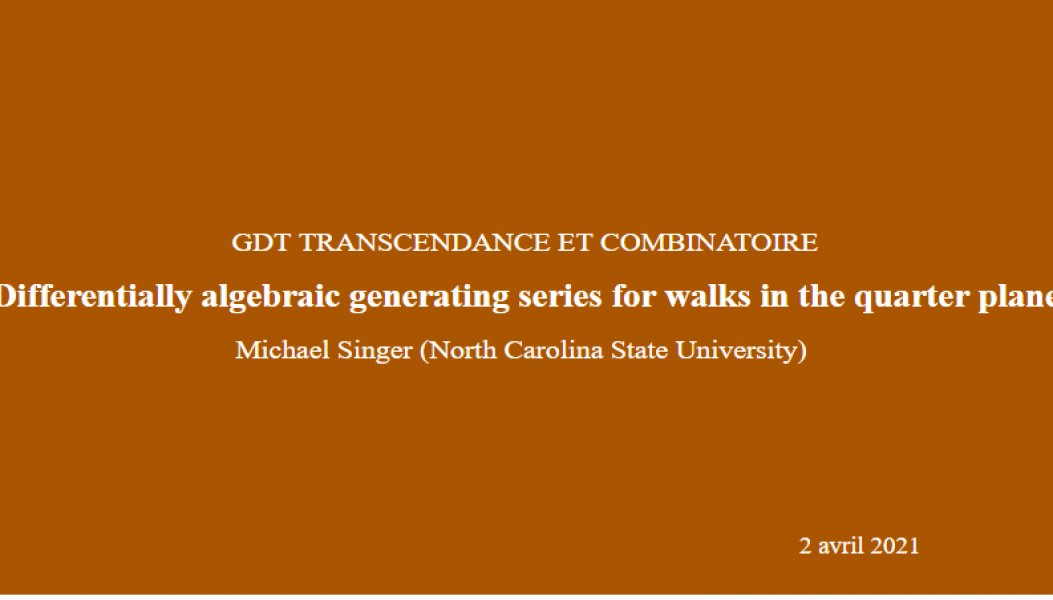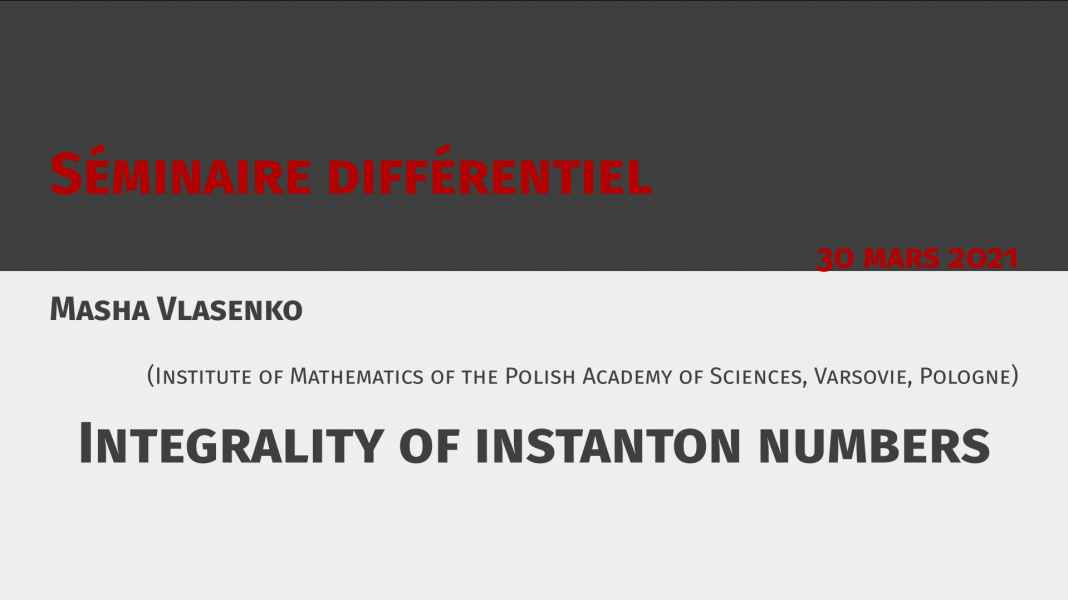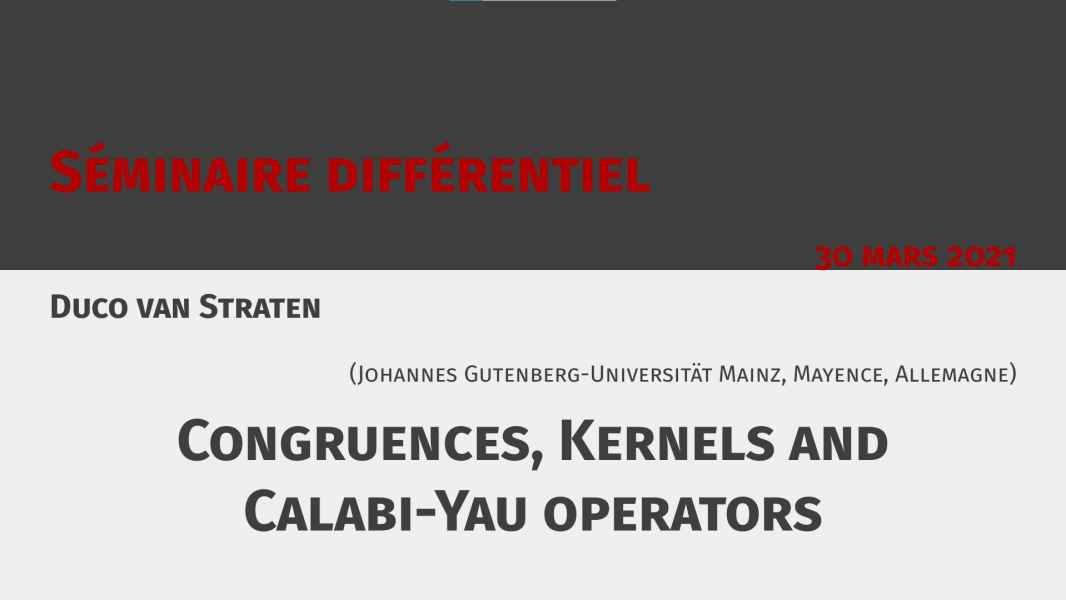Bon ton du Séminaire différentiel en ligne : merci de vous connecter en utilisant votre nom et votre prénom réel et complet. À défaut de voir le visage des personnes qui suivent l'exposé, nous pensons que l'orateur doit au moins savoir qui sont les collègues connectés.
Organisateurs : Alin Bostan et Lucia Di Vizio
Orateurs : Herwig Hauser (Universität Wien), Mioara Joldes (LAAS-CNRS), Daniel Vargas-Montoya (Université Lyon I)
Programme :
10h30 : accueil
11h00-12h00 : Herwig Hauser (Universität Wien) – Why don't we see \(C^2\)-singularities? [AFFICHER LES SLIDES]
Résumé: The real algebraic curve given by the equation \(x^3 = y^4\) has a singularity at \(0\), though it is \(C^1\)-smooth at that point. The passengers of a high speed train having the curve as its track will realize this since the liquid in the glass they are just drinking (beer, wine, or plain water) will spill over. There is a jump in the acceleration. Even if we look for hours at the curve, we will not succeed to see eventually the singularity at 0. In the lecture, we discuss how our neural and sensory system would have to evolve to be able to recognize \(C^2\)-singularities which are \(C^1\)-smooth. We will start with the beautiful work of Santiago Ramón y Cajal (Nobel prize in medicine in 1906) and then develop the (very simple) mathematics of our eye, its retina and the underlying ganglion cells. This will result in elementary but nice geometry and combinatorics. Conversely, one could only use mathematics (which one?) to construct from scratch a machine which is able to process visual information as our eye does.
12h15-14h15 : déjeuner
14h30-15h30 : Mioara Joldes (LAAS-CNRS) – On Moment Problems with Holonomic Functions [AFFICHER LES SLIDES]
Résumé: Many reconstruction algorithms from moments of algebraic data were developed in optimization, analysis or statistics. Lasserre and Putinar proposed an exact reconstruction algorithm for the algebraic support of the Lebesgue measure, or of measures with density equal to the exponential of a known polynomial. Their approach relies on linear recurrences for the moments, obtained using Stokes theorem. In this talk, we discuss an extension of this study to measures with holonomic densities and support with real algebraic boundary. Based on the framework of holonomic distributions and Stokes theorem, our approach computes recurrences for the moments which stay linear w.r.t the coefficients of the polynomial vanishing over the support boundary. This property allows for an efficient reconstruction method (from sufficiently many moments) for both these coefficients and those of the polynomials involved in the holonomic operators which annihilate the density, by solving linear systems only. This is a joint work with Florent Bréhard and Jean-Bernard Lasserre.
15h45-16h45 : Daniel Vargas-Montoya (Université Lyon I) – Structure de Frobenius forte, algébricité modulo \(p\) et indépendance algébrique [AFFICHER LES SLIDES]
Résumé: Cet exposé a deux buts. D'abord, nous soulignons la pertinence de la notion de la structure de Frobenius forte dans l'étude d'une conjecture de Adamczewski et Delaygue concernant le degré d'algébricité modulo \(p\) de \(G\)-fonctions. Dans ce sens, nous montrerons la conjecture dans le cas des séries hypergéométriques généralisées en montrant que les opérateurs différentiels hypergéométriques possèdent une structure de Frobenius forte pour presque tout nombre premier \(p\).
Deuxièmement, nous approfondirons dans l'étude de l'algébricité modulo \(p\) de \(G\)-fonctions en montrant que si \(f\) est une série à coefficients dans l'anneau des entiers qui annule un opérateur muni d'une structure de Frobenius forte pour presque tout nombre premier \(p\) ainsi qu'un opérateur MUM alors, la réduction de \(f\) modulo \(p\) annule une expression de la forme \(X-A_p(z)X^{p^k}\), où \(A_p(z)\) est une fraction rationnelle à coefficients dans le corps \(\mathbb F_p\) dont la hauteur est \(O(p^{2k})\). Finalement, nous présenterons quelque résultats de l'indépendance algébrique de ces séries sur \(\mathbb Q(z)\).
Les annonces des exposés ci-dessous sont diffusés sur la liste la liste News du GDR EFI : pour s'inscrire (ou se désinscrire) suivre ce lien. Il existe aussi un canal Telegram (https://t.me/gdrefi) et un agenda Google "GDR EFI" (url de l'agenda, lien ical, POUR RECEVOIR LES ANNONCES :
 ).
).

